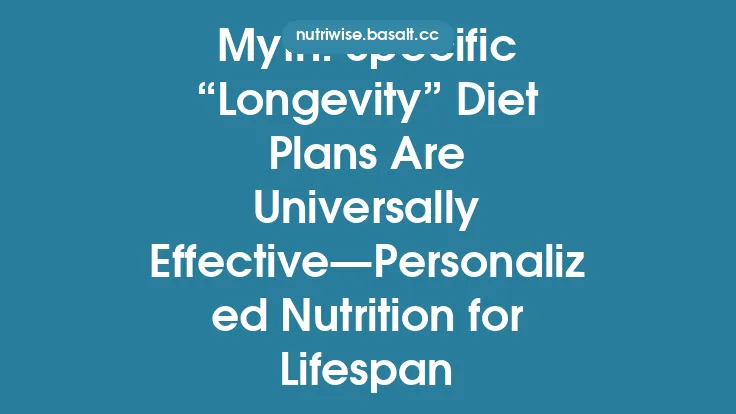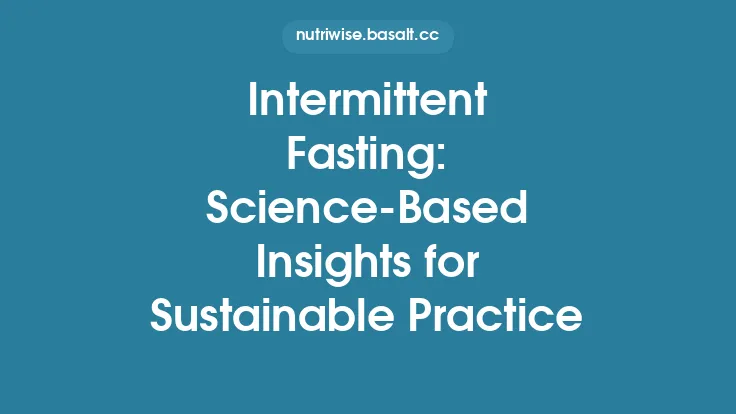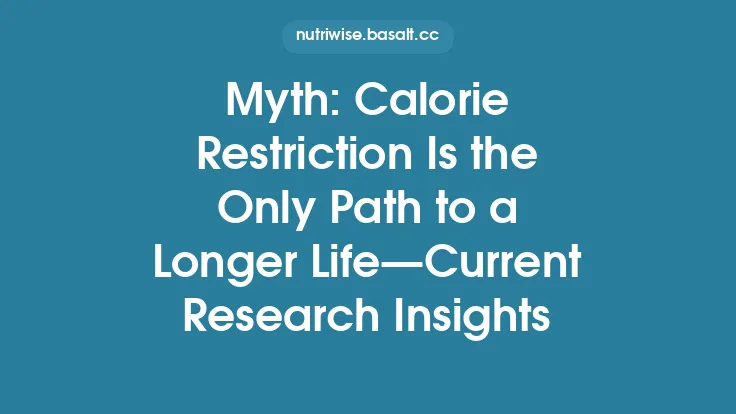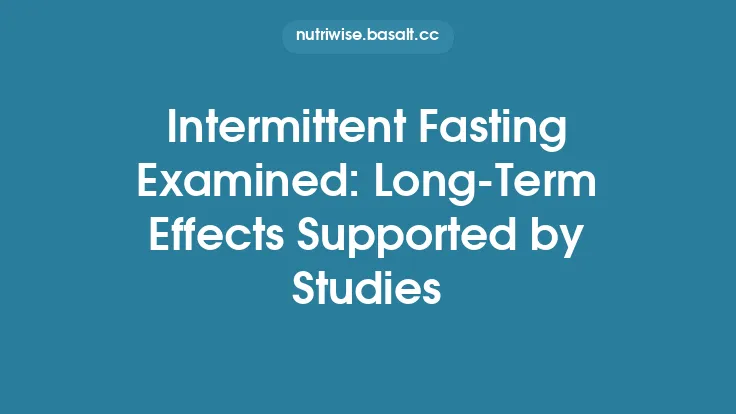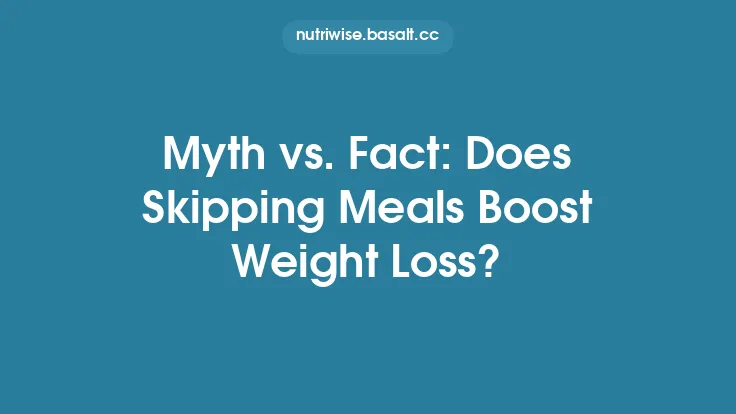Intermittent fasting (IF) has surged in popularity over the past decade, often being touted as a “silver bullet” for extending human lifespan. Headlines proclaim that simply skipping breakfast or limiting eating to an eight‑hour window can unlock the secrets of longevity that were once the exclusive domain of calorie‑restriction studies or exotic “super‑foods.” While the enthusiasm is understandable—IF is relatively easy to implement and promises a host of metabolic benefits—the claim that it automatically boosts lifespan is far more nuanced. In this article we unpack the scientific evidence, explore the biological pathways that could link fasting to aging, and highlight the limitations and individual factors that determine whether IF truly contributes to a longer, healthier life.
Understanding Intermittent Fasting
Intermittent fasting is an umbrella term for eating patterns that cycle between periods of voluntary abstinence from caloric intake and periods of normal eating. The most common regimens include:
| Regimen | Typical Pattern | Approx. Fasting Duration |
|---|---|---|
| Time‑Restricted Feeding (TRF) | 8‑hour eating window (e.g., 12 pm–8 pm) | 16 h fast |
| Alternate‑Day Fasting (ADF) | 24 h fast every other day (often with ≤ 25 % of daily calories) | 24 h fast |
| 5:2 Diet | Normal eating 5 days/week, ≤ 500–600 kcal on 2 non‑consecutive days | 24 h fast (low‑calorie) |
| Eat‑Stop‑Eat | 24‑hour fast once or twice weekly | 24 h fast |
| Periodic Prolonged Fasting | 48–72 h fast performed occasionally | 48–72 h fast |
These protocols differ not only in fasting length but also in the degree of caloric restriction during the fasting window. Importantly, IF is distinct from chronic calorie restriction (CR), which involves a sustained 20‑40 % reduction in daily energy intake. IF can be performed with or without an overall reduction in calories, and this distinction is critical when interpreting research findings.
Biological Mechanisms Linked to Longevity
Researchers have identified several cellular and systemic pathways that are modulated by fasting and that, in theory, could influence the aging process:
- Autophagy Activation
- Fasting triggers the lysosomal degradation pathway known as autophagy, which clears damaged proteins and organelles. In animal models, enhanced autophagy correlates with improved cellular homeostasis and extended lifespan.
- Insulin/IGF‑1 Signaling Modulation
- Periods of low insulin and reduced insulin‑like growth factor‑1 (IGF‑1) signaling are associated with longevity in worms, flies, and rodents. IF often lowers fasting insulin and improves insulin sensitivity, potentially mimicking some benefits of CR.
- Mitochondrial Biogenesis and Efficiency
- Fasting stimulates peroxisome proliferator‑activated receptor gamma coactivator‑1α (PGC‑1α), promoting the formation of new mitochondria and enhancing oxidative phosphorylation efficiency, which may reduce reactive oxygen species (ROS) production.
- Hormesis and Stress Resistance
- Short, intermittent metabolic stress can up‑regulate protective stress‑response genes (e.g., NRF2, sirtuins). This hormetic effect may improve resilience against age‑related cellular damage.
- Circadian Rhythm Alignment
- Time‑restricted feeding that aligns food intake with the body’s natural light‑dark cycle can reinforce circadian gene expression, which is increasingly recognized as a determinant of metabolic health and aging.
- Inflammation Reduction
- Several studies report lower circulating pro‑inflammatory cytokines (e.g., IL‑6, TNF‑α) after IF interventions, suggesting a dampening of chronic low‑grade inflammation—a hallmark of aging.
While these mechanisms are biologically plausible, translating them into concrete lifespan extension in humans requires robust longitudinal data, which remains limited.
Animal Studies: What the Lab Shows
The majority of mechanistic insights come from rodent and non‑human primate experiments:
- Rodent Models
- Mice subjected to alternate‑day fasting or 2‑hour daily feeding windows often live 10‑30 % longer than ad libitum‑fed controls, with concurrent improvements in glucose tolerance, reduced tumor incidence, and preserved cognitive function.
- However, the magnitude of lifespan extension varies by strain, sex, and baseline diet composition. For instance, in genetically heterogeneous mice, IF’s effect on lifespan was modest and sometimes absent when the diet was already low in calories.
- Non‑Human Primates
- A 4‑year study in rhesus monkeys comparing a 30 % calorie‑restricted diet to an ad libitum diet found that the CR group had lower age‑related disease markers, but a parallel study using a time‑restricted feeding schedule (12 h fast/12 h feed) showed metabolic benefits without clear evidence of increased survival.
Key take‑aways from animal work:
- Fasting Length Matters – Longer fasts (≥ 16 h) tend to produce stronger autophagic and hormonal responses.
- Caloric Deficit Amplifies Effects – When IF is combined with an overall reduction in calories, the longevity benefits resemble those of traditional CR.
- Species Differences – Rodents have a much higher metabolic rate and different feeding patterns than humans, limiting direct extrapolation.
Human Evidence: Observational and Interventional Findings
Observational Cohorts
Large population studies have examined fasting‑related eating patterns and mortality outcomes:
- NHANES (U.S.) – Participants who reported eating their first meal after 10 am and last meal before 7 pm (≈ 9‑hour eating window) exhibited a modest (~10 %) reduction in all‑cause mortality over a median 10‑year follow‑up, after adjusting for age, BMI, smoking, and physical activity.
- UK Biobank – A subset analysis found that self‑identified “intermittent fasters” had lower incidence of type 2 diabetes and cardiovascular events, but no statistically significant difference in overall mortality after 12 years.
These observational data are valuable for hypothesis generation but cannot establish causality due to potential confounding (e.g., health‑conscious individuals may also exercise more, avoid smoking, etc.).
Randomized Controlled Trials (RCTs)
RCTs provide the strongest evidence, yet few have been powered to assess hard endpoints like mortality or lifespan. The most informative trials focus on surrogate markers linked to aging:
| Study | Design | IF Protocol | Duration | Primary Outcomes |
|---|---|---|---|---|
| EFFECT (2021) | Parallel RCT, 200 adults, BMI 25‑35 | 16:8 TRF | 12 months | Reduced fasting insulin (‑15 %), improved HOMA‑IR, modest weight loss (‑3 %) |
| FAST‑AGE (2022) | Crossover, 100 older adults (65‑80 y) | 5:2 diet (2 low‑calorie days/week) | 6 months per phase | Lower systolic BP (‑5 mmHg), decreased IL‑6, no change in lean mass |
| CALM‑Fasting (2023) | Parallel, 150 participants, mixed metabolic health | Alternate‑day fasting (≈ 25 % calories on fast days) | 9 months | Improved lipid profile, increased HDL, no adverse events |
Across these trials, IF consistently improves insulin sensitivity, blood pressure, lipid metabolism, and inflammatory markers—factors that are predictive of reduced age‑related disease risk. However, none demonstrated a direct effect on lifespan, simply because the follow‑up periods are too short and the sample sizes insufficient for mortality outcomes.
Meta‑Analyses
Recent meta‑analyses (e.g., 2024 systematic review of 34 RCTs, n ≈ 4,500) conclude that IF yields modest weight loss (average 2‑4 % of baseline weight) and improves fasting glucose and triglycerides. The authors caution that the heterogeneity of protocols and the lack of long‑term data preclude definitive statements about longevity.
Key Moderators and Confounding Factors
- Baseline Metabolic Health
- Individuals with insulin resistance, obesity, or metabolic syndrome tend to experience larger metabolic improvements from IF than metabolically healthy participants. The magnitude of any potential longevity benefit may therefore be contingent on starting health status.
- Age and Sex
- Animal studies suggest sex‑specific responses; for example, female mice sometimes show less pronounced lifespan extension. Human data are sparse, but hormonal differences could influence fasting tolerance and metabolic adaptation.
- Diet Quality During Feeding Windows
- IF does not automatically correct a poor diet. Consuming high‑sugar, ultra‑processed foods during the eating period can blunt or negate metabolic gains, limiting any downstream impact on aging pathways.
- Adherence and Sustainability
- Long‑term adherence rates for strict IF protocols (e.g., alternate‑day fasting) are lower than for more flexible approaches like 12‑hour TRF. Real‑world effectiveness hinges on whether individuals can maintain the pattern over years or decades.
- Physical Activity Interactions
- Exercise performed in a fasted state may amplify certain benefits (e.g., increased fatty‑acid oxidation) but also raises the risk of muscle loss if protein intake is insufficient. Balancing IF with resistance training is essential for preserving lean mass, a key determinant of healthy aging.
Potential Risks and Contraindications
While IF is generally safe for healthy adults, several groups should approach it with caution:
| Population | Specific Concerns | Recommendations |
|---|---|---|
| Pregnant or lactating women | Energy needs are higher; fasting may affect fetal growth or milk production | Avoid prolonged fasts; prioritize balanced meals |
| Individuals with a history of eating disorders | Restrictive patterns can trigger relapse | Seek professional guidance; consider alternative dietary strategies |
| People on certain medications (e.g., insulin, sulfonylureas) | Risk of hypoglycemia during fasting periods | Adjust medication timing/dosage under medical supervision |
| Older adults with sarcopenia | Potential loss of muscle mass if protein intake is inadequate | Emphasize protein‑rich meals during feeding windows; incorporate resistance training |
| Athletes or high‑intensity workers | Energy deficits may impair performance and recovery | Tailor fasting schedule around training; ensure adequate caloric intake on training days |
Practical Guidance for Those Considering IF
- Start Small
- Begin with a modest 12‑hour fast (e.g., 7 pm–7 am) for 1‑2 weeks, then gradually extend to 14‑16 hours if well tolerated.
- Prioritize Nutrient‑Dense Foods
- Fill the eating window with vegetables, lean proteins, whole grains, nuts, and healthy fats. This maximizes micronutrient intake and supports autophagy without compromising nutrition.
- Maintain Adequate Protein
- Aim for 1.0‑1.2 g protein per kilogram body weight per day, distributed across meals to preserve lean mass.
- Stay Hydrated
- Water, herbal teas, and black coffee/tea are permissible during fasting periods and can help mitigate hunger.
- Monitor Biomarkers
- Periodic checks of fasting glucose, lipid profile, blood pressure, and body composition can help assess whether IF is delivering health benefits.
- Integrate Physical Activity
- Schedule strength training on non‑fasting days or after breaking the fast to ensure sufficient energy and protein availability for muscle repair.
- Be Flexible
- Social events, travel, or illness may necessitate temporary adjustments. Consistency over the long term matters more than perfection on any single day.
Future Directions and Research Gaps
- Longitudinal Cohort Studies with Mortality Endpoints
Large, diverse populations followed for 20‑30 years could clarify whether IF translates into reduced all‑cause mortality independent of calorie restriction.
- Mechanistic Human Trials
Studies employing muscle biopsies, metabolomics, and epigenetic clocks before and after prolonged IF can directly test whether the proposed longevity pathways are activated in people.
- Personalized Fasting Protocols
Integration of genetic, microbiome, and circadian data may enable tailoring of fasting windows to individual chronotypes and metabolic phenotypes.
- Comparative Effectiveness Research
Head‑to‑head trials comparing IF with other evidence‑based interventions (e.g., Mediterranean diet, regular aerobic exercise) will help determine the relative contribution of fasting to healthy aging.
- Safety in Vulnerable Populations
More data are needed on the impact of IF in older adults with frailty, patients with chronic kidney disease, and those on polypharmacy regimens.
Bottom Line: Separating Myth from Evidence
- **The claim that intermittent fasting *automatically* extends lifespan is not supported by current human data.**
- What the evidence does show is that many IF protocols improve metabolic health markers—insulin sensitivity, blood pressure, lipid profiles, and inflammatory status—that are associated with reduced risk of age‑related diseases.
- Longevity benefits, if any, appear to be contingent on factors such as overall calorie intake, diet quality, adherence, baseline health, and individual biology.
- For most healthy adults, IF can be a useful tool for weight management and metabolic optimization, provided it is practiced safely and paired with a nutrient‑dense diet and regular physical activity.
- If your primary goal is to live longer, consider IF as one component of a broader lifestyle strategy that includes balanced nutrition, regular exercise, adequate sleep, stress management, and routine medical care.
In summary, intermittent fasting is a promising, evidence‑backed approach to improve several health parameters linked to aging, but it is not a guaranteed, stand‑alone prescription for a longer life. Ongoing research will continue to refine our understanding of who benefits most, which fasting patterns are optimal, and how IF fits into the complex mosaic of longevity science.
